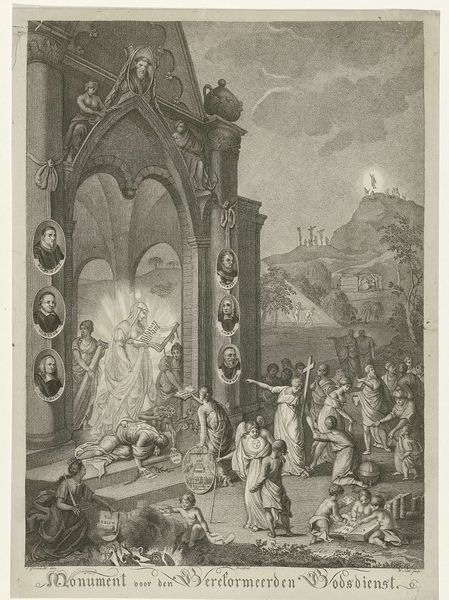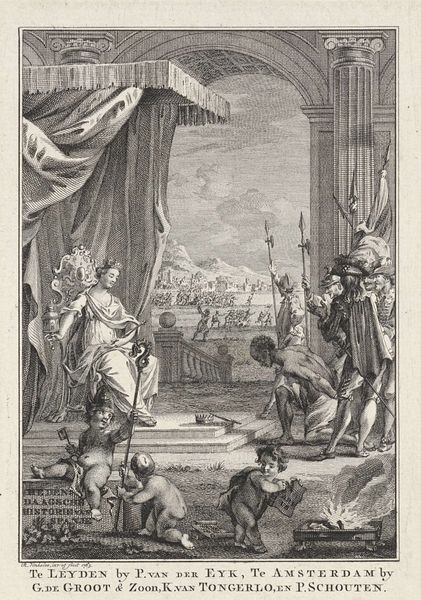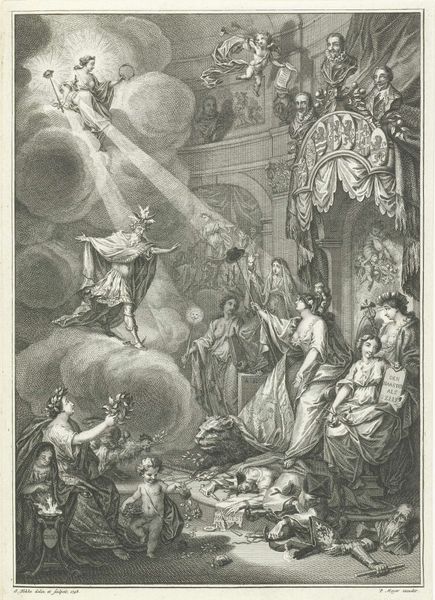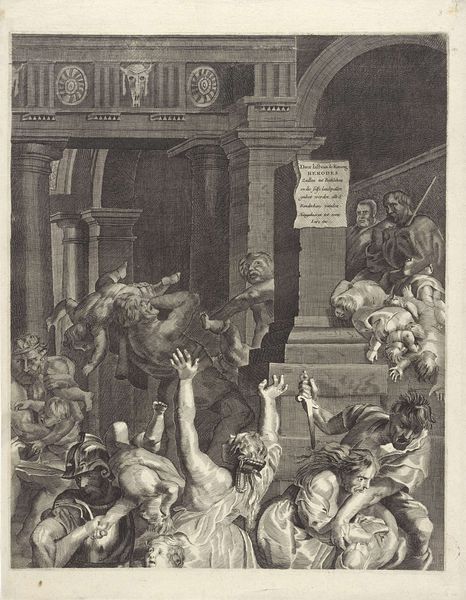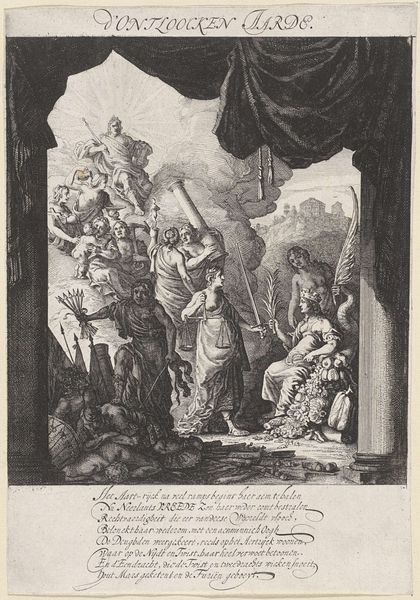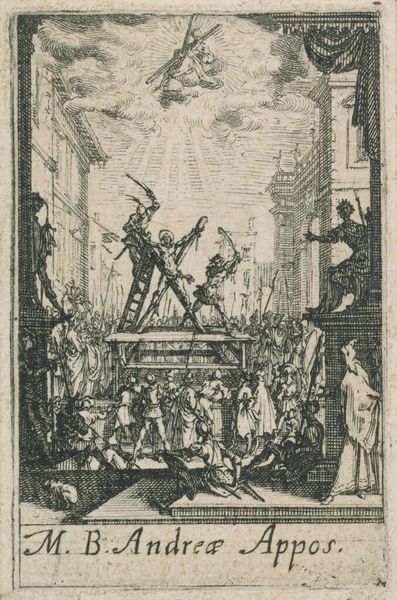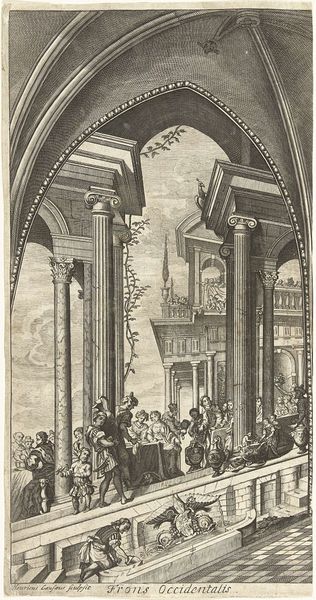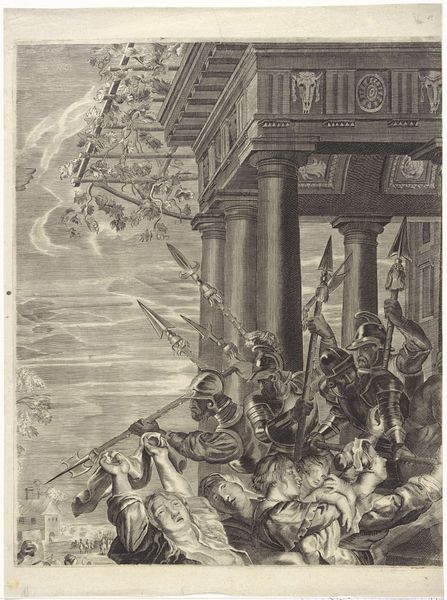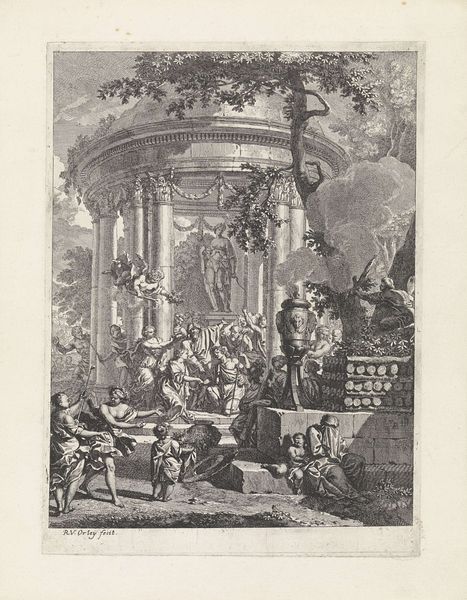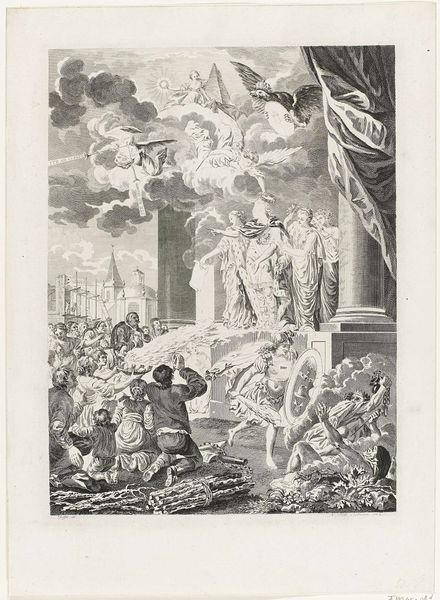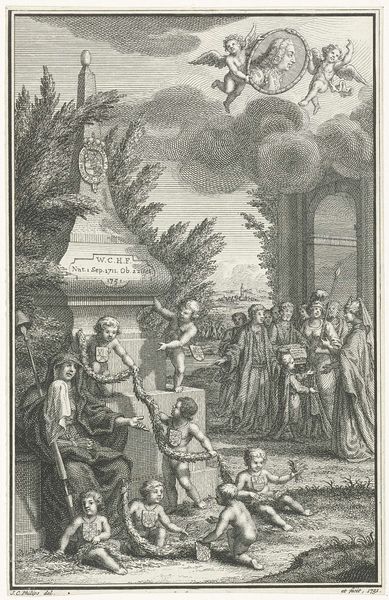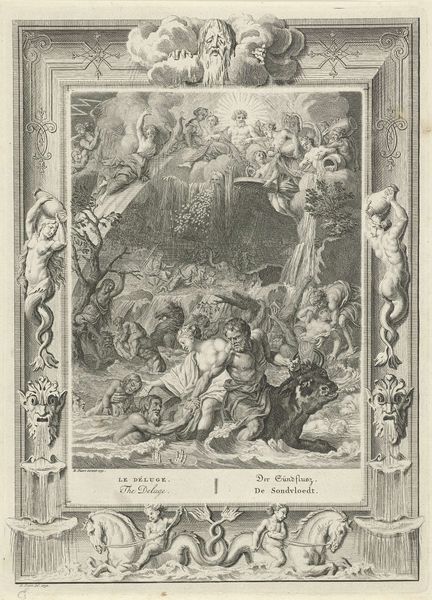
engraving
#
allegory
#
baroque
#
old engraving style
#
history-painting
#
engraving
Dimensions: height 362 mm, width 265 mm
Copyright: Rijks Museum: Open Domain
Curator: This engraving, entitled "Allegory in Honor of the Jansenists," was created in 1724 by an anonymous artist. You can find it here at the Rijksmuseum. What are your initial thoughts? Editor: There's an incredible sense of dramatic light and shadow. The composition is complex, with so much detail crammed in but guided by the lines of the architecture, directing the eye. It makes me wonder about the symbolic use of these effects to express theological claims and the relationship with knowledge it is showcasing. Curator: It's interesting you highlight the theological claims embedded here. Jansenism was a controversial theological movement within the Catholic Church emphasizing original sin and predestination, heavily based on Saint Augustine. The means of distribution for this piece would certainly have served their message. Think about how it allowed the Jansenists to circulate their ideas visually during periods of persecution. Editor: Exactly. The way light pours onto the central figure of a woman with the book in front of portraits, gives the image the appearance of endorsing their philosophies. Notice how that ray continues towards a mountainous scene, and consider the semiotic use of this landscape: could that hill-top presentation allude to the Biblical mount and its inherent concepts? Curator: Considering the medium and process here—engraving, with its reproducible nature—Jansenist factions were actively engaging with early modern printing practices and distribution networks to get their arguments to sympathetic eyes. An allegorical piece like this had political value. Who paid for its creation? Who would distribute it? The socio-economic circumstances behind works of art are often left out of conventional interpretation, especially religious or historical art, that must also be accounted. Editor: Certainly, but how could we even start understanding what motivated the artist here without deconstructing their own visual rhetoric? Think, for example, of the pile of discarded documents on the lower left; a potential attack against philosophical detractors of the Jansenist movement—discarded doctrines as garbage for theological study. These are key arguments in play which makes the engraving powerful in itself. Curator: The engraving’s effectiveness lies also in understanding the culture from which its creator worked. I'm thinking especially of the intended viewers, who understood those cultural touchstones implicitly; their engagement would depend less on pictorial devices than its social pertinence in everyday struggles. Editor: Perhaps. But I think to ignore its form would mean missing key ingredients. I suppose that tension between decoding structure and decoding socio-historical context is what keeps this interesting! Curator: Agreed. It's in bridging that gap where we can appreciate the art in its entirety and influence in history.
Comments
No comments
Be the first to comment and join the conversation on the ultimate creative platform.
